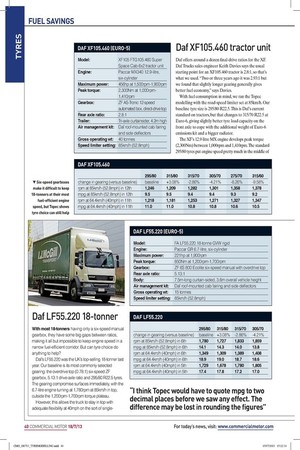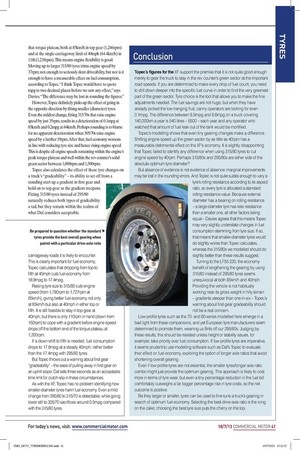Daf LF55.220 18-tonner With most 18-tonners having only a six-speed
Page 32

Page 33

If you've noticed an error in this article please click here to report it so we can fix it.
manual gearbox, they have some big gaps between ratios, making it all but impossible to keep engine speed in a narrow fuel-efficient corridor. But can tyre choice do anything to help?
Daf's LF55.220 was the UK's top-selling 18-tonner last year. Our baseline is its most commonly selected gearing: the overdrive top (0.78:1) six-speed ZF gearbox, 5.13:1 drive-axle ratio and 295/80 R22.5 tyres. The gearing compromise surfaces immediately, with the 6.7-litre engine turning at 1,780rpm at 85km/h in top, outside the 1,200rpm-1,700rpm torque plateau.
However, this allows the truck to stay in top with adequate flexibility at 40mph on the sort of single carriageway roads it is likely to encounter. This is clearly important for fuel economy; Topec calculates that dropping from top to fifth at 40mph cuts fuel economy from 18.9mpg to 17.4mpg.
If a down-shift to fifth is needed, fuel consumption drops to 17.8mpg at a steady 40mph, rather better than the 17.4mpg with 295/80 tyres.
But Topec throws out a warning about first gear "gradeability" —the ease of pulling away in first gear on an uphill slope. Daf sets three seconds as an acceptable time limit for clutch-slip in these circumstances.
As with the XF, Topec has no problem identifying how smaller-diameter tyres harm fuel economy. Even a mild change from 295/80 to 315/70 is detectable, while going lower still to 305/70 sacrifices around 0.5mpg compared with the 315/80 tyres.








































